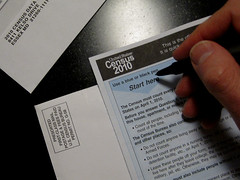
Bring on the sweaters and pumpkin spice lattes! The time of year has finally arrived where jackets and boots become wardrobe staples and changing leaves capture the imagination. What exactly is it about the autumn season that people love? Kathryn Lively, professor of sociology at Dartmouth College, might have the answer.
In a recent Huffington Post article, Lively explains that people view fall as comforting. From a sociological perspective, individual’s emotions are tied to the meaning we give ourselves, others, and times of year. For example, the emotional connection towards Thanksgiving and football season symbolizes what many believe the autumn represents. This coming together of joy and creating memories provides special meaning to this season. But perhaps the biggest reason for our infatuation with fall is that we have been socially conditioned to enjoy fall since we were children. The fall represents a temporal landmark where a clean slate can begin and new routines begin. As Lively explains,
“We’re conditioned from a very early age that the autumn comes with all these exciting things…As children, we come to associate fall with going back to school, new school supplies, seeing friends. It’s exciting, for most. We still respond to this pattern that we experienced for eighteen years.”
Whatever the case may be, enjoy the fall season, but remember to brace yourself – winter is coming.



 A recent
A recent